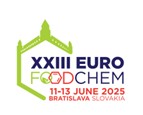Scientific journal
Journal of Food and Nutrition Research
Summary No. 2 / 2009
HRONSKÁ, H. – GROSOVÁ, Z. – ROSENBERG, M.
Hydrolysis of lactose in milk by Kluyveromyces lactis β-galactosidase immobilized in polyvinylalcohol gel
Journal of Food and Nutrition Research, 48, 2009, No. 2, s. 87-91
Helena Hronská, Institute of Biotechnology and Food Science, Faculty of Chemical and Food Technology, Slovak University of Technology, Radlinského 9, SK – 812 37 Bratislava, Slovakia. Tel: +421 2 5932 5480, e-mail: helena.hronska@stuba.sk
Summary: beta-galactosidase was immobilized to polyvinylalcohol hydrogel lens-shaped capsules, LentiKats. After immobilization, the enzyme retained 20% of the free-enzyme activity. We found that 0.1 mol•l-1 Na2SO4, which is usually used for hardening of LentiKats, caused the inhibition of beta-galactosidase enzyme activity (after 60 min, it decreased to less than 1% of the initial value). Therefore, we successfully used 0.1 mol•l-1 K2SO4 for this crucial step. The pH optimum for both immobilized and free forms of the enzyme was 6.0–6.5, optimum temperature was 48 °C. The immobilized enzyme was used for lactose hydrolysis in repeated batch mode in ultra-heat treated milk (4.7% w/v lactose) at 15, 30 and 45 °C. The entrapped enzyme retained 80% of the inicial activity (59 µmol•min-1g-1) after 10 repeated batches at 30 °C without any change in the mechanical stability of LentiKats. During milk hydrolysis, production of galactooligosaccharides was also observed.
Keywords: β-galactosidase; immobilization; lactose; hydrolysis; polyvinylalcohol gel
Download:
(pdf, 180.54 Kb, 6077x)










